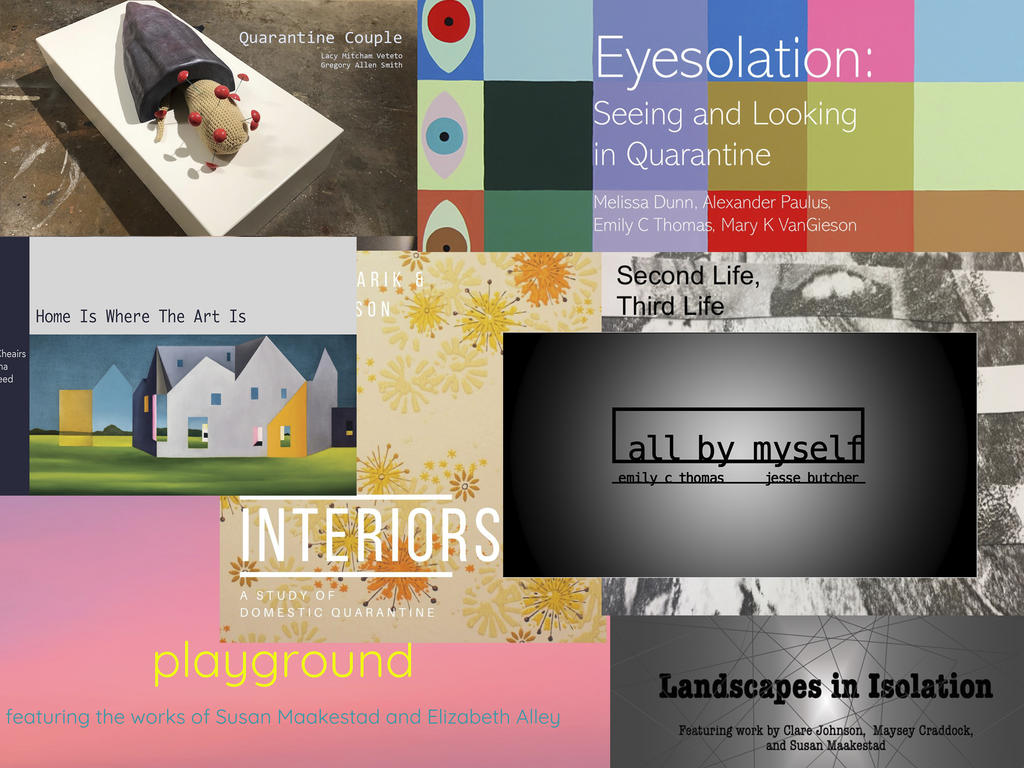In a typical year, students in Art 260: Curation in Context work with Memphis galleries to learn the breadth of showcasing artists’ works and then invite friends and faculty to the exhibitions they curate at local venues. Faced with the sudden transition to remote learning and social distancing, Art 260 students—Jenna Gilley ’20, Ben Aquila ’20, Katie Clark ’20, Julia Conway ’20, Caroline Koch ’21, Dresden Timco ’21, Roland Donnelly-Bullington ’21, and Marlo Morales ’22—were forced to abandon their original plans and turn to digital platforms to display their curated shows.
Working remotely with Memphis-based artists, they centered their creative projects on addressing such questions as “What does art mean during quarantine? How do the internet and social media influence how we curate and experience art? How can art and artists help us document, process, and challenge the situations we find ourselves in?”
Joel Parsons, assistant professor of art and director of the Clough-Hanson Gallery at Rhodes, challenged his Art 260 students to critically examine the role of art in times of separation and hardship, as well as to consider social media in new ways. “We talked about the root meaning of the word ‘curate’—to care,” says Parsons. “Students restarted their planning process, shifting to online exhibitions that dealt directly with the circumstances of pandemic and quarantine. The result is an amazing document of this moment, seen through the work of Memphis-based artists and thoughtfully contextualized by our students. Even more than usual, the class became an exercise in being care-full.”
“I changed courses thematically,” says Roland Donnelly-Bullington ’21. “My show explicitly dealt with the role of social media and our increasingly digital lives while being kept to our homes during quarantine. I’ve found that art usually finds a way to maintain relevance in changing times. All of the pieces in my show were created before quarantine, but found new resonance placed in this specific lineup of works and during this particular time.”
Although students were initially disappointed that they were not able to curate their original, fully realized shows in actual gallery venues, their engagement with the city and their connections to its art scene grew even more profound as they worked from afar. Katie Clark ’20 says, “When the pandemic hit, rather than accepting defeat we made the most of the distance to elevate our conversations about the purpose of art and the adaptations the art world needs to make in order to keep up with a virtually connected era. I Zoomed, emailed, and called several Memphis artists and talked with them about the challenge of separation, the beauty of the Memphis community, public health disparities, the power of art in a virtual world, and even their family and personal life. I had the opportunity to speak with these artists about topics we never would have discussed if this show didn’t happen remotely.”
The digital exhibitions, shared on the Clough-Hanson Gallery Facebook page and available to the community on the gallery’s website, include artists Sophia Mason, Paula Kovarik, Lacey Mitcham Veteto, Gregory Allen Smith, Emily Thomas, Alex Paulus, Melissa Dunn, Nancy Cheairs, Ryan Steed, Nick Pena, Maysey Craddock, Clare Johnson, Susan Maakestad, Jesse Butcher, Elizabeth Alley, Meredith Potter, Mary K VanGieson, and Melissa Wilkinson.
“The result of this project is a group of online exhibitions that help us see the landscape, the home, personal relationships, and our own bodies with the clarity and insight that only art and artists can offer,” says Parsons.
“The art on virtual display is at turns heartening, comforting, and provocative. Collectively, it offers a snapshot of art in Memphis in this moment. The students and I hope viewing it will help you feel a bit more connected to this community, and a bit less alone in your isolation.”
By Grace Merriman '21
